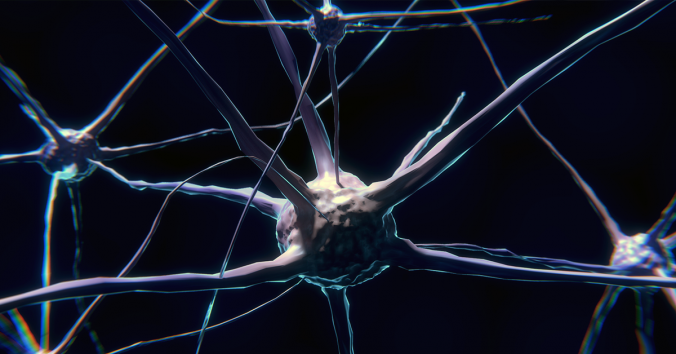Newly formed concepts can sometimes satisfy such urgent linguistic needs that they immediately seem completely self-evident. Moral stress is probably such a concept. It is not many decades old. Nevertheless, the concept probably appeared from the beginning as an all-too-familiar reality for many healthcare workers.
An interesting aspect of these immediately self-evident concepts is that they effortlessly find their own paths through language, despite our efforts to define the right path. They are simply too striking in living spoken language to be captured in the more rigid written language of definitions. However, the first definition of moral stress was fairly straightforward. This is how Andrew Jameton defined the concept:
“Moral distress arises when one knows the right thing to do, but institutional constraints make it nearly impossible to pursue the right course of action.”
Although the definition is not complicated in the written language, it still prevents the concept from speaking freely, as it wants to. For, do we not spontaneously want to talk about moral stress in other situations as well? For example, in situations where two different actions can be perceived as the right ones, but if we choose one action it excludes the other? Or in situations where something other than “institutional constraints” prevents the right course of action? Perhaps a sudden increase in the number of patients.
Here is a later definition of moral stress, which leaves more open (by Kälvemark, Höglund and Hansson):
“Traditional negative stress symptoms that occur due to situations that involve an ethical dimension where the health care provider feels he/she is not able to preserve all interests at stake.”
This definition allows the concept to speak more freely, in more situations than the first, although it is possibly slightly more complicated in the written language. That is of course no objection. A definition has other functions than the concept being defined, it does not have to be catchy like a song chorus. But if we compare the definitions, we can notice how both express the authors’ ideas about morality, and thus about moral stress. In the first definition, the author has the idea that morality is a matter of conscience and that moral stress occurs when institutional constraints of the profession prevent the practitioner from acting as conscience demands. Roughly. In the second definition, the authors have the idea that morality is rather a kind of balancing of different ethical values and interests and that moral stress arises in situations that prevent the trade-offs from being realized. Roughly.
Why do I dwell on the written and intellectual aspects of the definitions, even though it is hardly an objection to a definition? It has to do with the relationship between our words and our ideas about our words. Successful words find their own paths in language despite our ideas about the path. In other words: despite our definitions. Jameton both coined and defined moral (di)stress, but the concept almost immediately stood, and walked, on its own feet. I simply want to remind you that spoken-language spontaneity can have its own authority, its own grounding in reality, even when it comes to newly formed concepts introduced through definitions.
An important reason why the newly formed concept of moral stress caught on so immediately is probably that it put into words pressing problems for healthcare workers. Issues that needed to be noticed, discussed and dealt with. One way to develop the definition of moral stress can therefore be to listen to how healthcare workers spontaneously use the concept about situations they themselves have experienced.
A study in BMC Medical Ethics does just this. Together with three co-authors, Martina E. Gustavsson investigated how Swedish healthcare workers (assistants, nurses, doctors, etc.) described moral stress during the COVID-19 pandemic. After answering a number of questions, the participants were requested to describe, in a free text response, situations during the pandemic in which they experienced moral stress. These free text answers were conceptually analyzed with the aim of formulating a refined definition of moral stress.
An overarching theme in the free text responses turned out to be: being prevented from providing good care to needy patients. The healthcare workers spoke of a large number of obstacles. They perceived problems that needed to be solved, but felt that they were not taken seriously, that they were inadequate or forced to act outside their areas of expertise. What stood in the way of good care? The participants in the study spoke, among other things, about unusual conditions for decision-making during the pandemic, about tensions in the work team (such as colleagues who did not dare to go to work for fear of being infected), about substandard communication with the organizational management. All this created moral stress.
But they also talked about the pandemic itself as an obstacle. The prioritization of COVID-19 patients meant that other patients received worse care and were exposed to the risk of infection. The work was also hindered by a lack of resources, such as personal protective equipment, while the protective equipment prevented staff from comforting worried patients. The visiting restrictions also forced staff to act as guards against patients’ relatives and isolate infected patients from their children and partners. Finally, the pandemic prevented good end-of-life care. This too was morally stressful.
How can the healthcare workers’ free text responses justify a refined definition of moral stress? Martina E. Gustafsson and co-authors consider the definition above by Kälvemark, Höglund and Hansson as a good definition to start from. But one type of situation that the participants in the study described probably falls outside that definition, namely the situation of not being taken seriously, of feeling inadequate and powerless. The study therefore proposes the following definition, which includes these situations:
“Moral stress is the kind of stress that arises when confronted with a moral challenge, a situation in which it is difficult to resolve a moral problem and in which it is difficult to act, or feeling insufficient when you act, in accordance with your own moral values.”
Here, too, one can sense an idea of morality, and thus of moral stress. The authors think of morality as being about solving moral problems, and that moral stress arises when this endeavor encounters challenges, or when one feels inadequate in the attempts to solve the problems. The definition can be considered a refined idea of what moral stress is. It describes more precisely the relevant situations where healthcare workers spontaneously want to talk about moral stress.
Obviously, we can learn a lot about the concept of moral stress from the experience of the COVID-19 pandemic. Read the study here, which contains poignant descriptions of morally stressful situations during the pandemic: “Being prevented from providing good care: a conceptual analysis of moral stress among health care workers during the COVID-19 pandemic.”
Finally, I would like to mention two general lessons about language, which in my view the study highlights. The first is that we can learn a lot about our concepts through the difficulties of defining them. The study took this “definition resistance” seriously by listening to how healthcare workers spontaneously talk about moral stress. This created friction that helped refine the definition. The second lesson is that we often use words despite our ideas about what the words mean or should mean. Spoken language spontaneity has a natural weight and authority that we easily overlook, but from which we have much to learn – as in this empirical study.
Gustavsson, M.E., von Schreeb, J., Arnberg, F.K. et al. “Being prevented from providing good care: a conceptual analysis of moral stress among health care workers during the COVID-19 pandemic”. BMC Med Ethics 24, 110 (2023). https://doi.org/10.1186/s12910-023-00993-y
This post in Swedish
Minding our language












